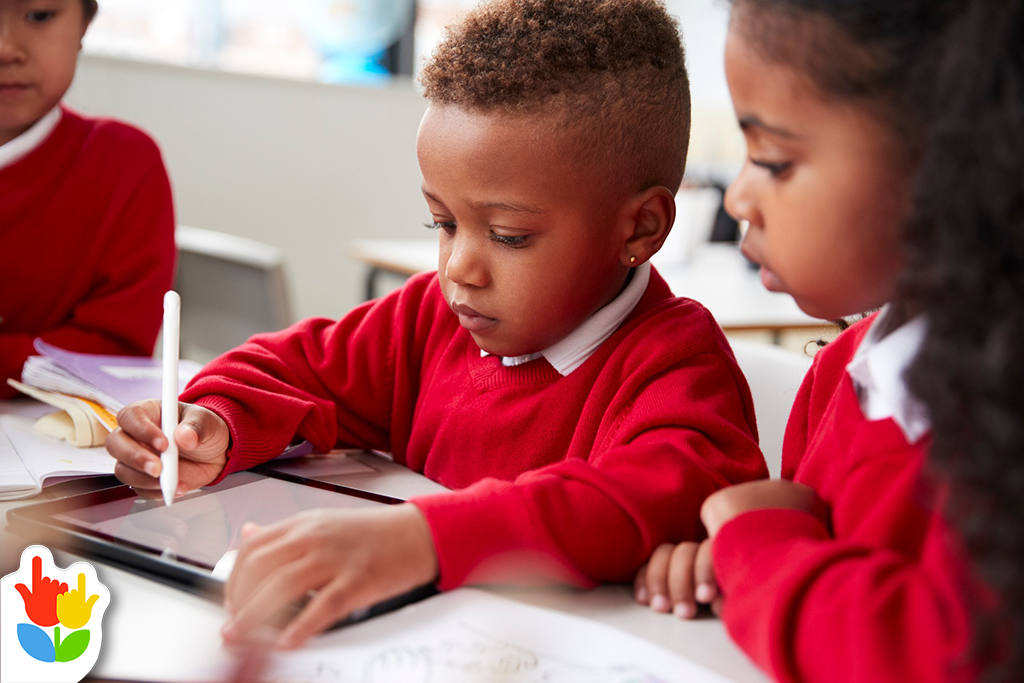Pencil 2.0: The Stylus
In today’s digital age, the art of pen on paper may seem like much more effort than sending a quick text message complete with emojis and acronyms. Although this (albeit) beautiful art form is slowly becoming less and less popular, it remains an essential part of the learning process. According to The Educator, research proves that the physical act of “annotating during lessons can make a significant difference.” With this information in mind, how can we combine this kinesthetic experience while still moving our students into the technological world? Welcome to your new teaching best friend: the stylus.

First things first, what is a stylus?
A stylus is a small instrument that looks like a pen. When the tip of the stylus touches a tablet, phone or compatible computer screen, it can draw, click and write. A stylus improves accuracy and mimics the same motion as writing with a pen or pencil.
Sounds interesting, but how can a stylus benefit students?
Since a stylus is basically a “pencil 2.0,” it provides the same advantages within the framework of learning. It is proven that students remember more of what they learn when they physically write down the material. This is the main reason that teachers are constantly repeating “write it down!” to their half-asleep, day-dreaming students. This allows learners to become more engaged with the lesson as they need to figure out the best way to capture the information. Dr. Helen Macpherson of the Institute for Physical Activity and Nutrition (IPAN) at Deakin University finds that “when we write by hand, we have to coordinate verbal and fine movement systems.” This allows students to be more present and active within the class and it focuses their energy.
In terms of note-taking, she reports that “when we learn new information, for example at school or in a university lecture, we don’t write verbatim, which means we have to create our own summaries and concepts.” Students need to develop their own short-hand and tricks for writing quickly and with legible words or sentences. This teaches them skills that are essential to excel in school, college and at their future workplace.
Wouldn’t typing be faster?
You may be asking yourself this very valid question and you’re not wrong. Typing is 100% more efficient but it is not the most effective way to learn and retain information. A study in 2012 by the University of Indiana found that 5-year-olds who wrote their letters, instead of typing, better processed what they were doing. Since our society is programmed to be constantly on our devices, we have begun to type almost mindlessly. When you make a mistake when typing, you can quickly hit delete and your line will be erased within seconds. With writing, you must go through the motions of erasing or using ‘white-out’ to get rid of the words you don’t want and then rewrite over your correction. This helps you better remember what you have written, the error you made and why you decided to fix it. Additionally, Dr. Helen Macpherson notes that “we can keep pace typing but we can’t keep pace with handwriting, it means we have different ways of encoding the information, which in turn leads to richer memory.”
How does LetterSchool fit in?
The University of Texas at Arlington looked at LetterSchool’s method in its study that investigated the impact of digital handwriting applications when paired with the traditional pencil on paper method. The control and experimental groups were both provided worksheets to practice their handwriting. The only difference was that the experimental group also used LetterSchool on a tablet with, you guessed it, a stylus. The results found that the experimental group’s manual dexterity improved as a direct result of the stylus. These students had a better grip when writing and this positively influenced their handwriting.
Incorporating a stylus in the classroom allows for a brilliant blend of technology and learning. The functionality of a stylus replicates the act of physically writing and this provides a similar benefit for children. As technology becomes more prominent in our schools, it is important to maintain core skills that lay the foundation for improved comprehension and retention.
Did you know that LetterSchool offers a 7-day free trial? Discover now what our app can do for your class. Download LetterSchool now.

